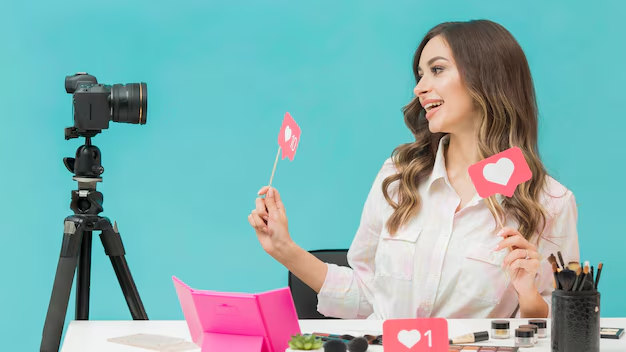The right timing is everything. In the fast-paced world of social media, even the best content can go unseen if it’s posted at the wrong moment. With algorithms changing constantly and attention spans shorter than ever, knowing when to post is just as important as knowing what to post.
That’s where data comes in. Recent engagement studies show that timing can increase reach, boost interactions, and improve overall ROI across platforms like TikTok, Instagram, YouTube, LinkedIn, and X (formerly Twitter).
But here’s the challenge: optimal posting times aren’t one-size-fits-all. What works for a B2B brand targeting corporate executives differs drastically from what works for a fashion brand connecting with Gen Z consumers. Your audience’s location, demographics, behavior patterns, and even the type of content you share all influence when your posts will perform best.
The good news? You don’t have to guess. Years of engagement data across social platforms have revealed clear patterns about when users are most active and receptive to content. In this article, we’ll break down the best posting times backed by engagement data so you can align your content strategy with when your audience is most active and maximize every post you share.
Why Posting Time Matters for Engagement
Most social media algorithms prioritize early engagement. When your post receives likes, comments, or shares within the first few minutes or hours, it signals to the algorithm that the content is valuable. As a result, it gets pushed to a wider audience. Missing that initial window can drastically reduce reach even for high-quality content.
Hootsuite’s 2025 analysis highlights clear daily and hourly engagement peaks across platforms and recommends scheduling posts to align with those windows to improve reach and impressions.
Later’s data team, which analyzes millions of posts, similarly shows that identifying your account’s unique “best times to post” leads to noticeably higher engagement. This is why many brands rely on platform-specific best-time tools.
Best Posting Times Backed by Engagement Data (Platform by Platform)
1. Instagram
According to Sprout Social’s 2025 Social Media Trends Report, the best times to post on Instagram are weekdays between 11 AM and 2 PM, with peak engagement on Wednesdays at 11 AM and Fridays at 10-11 AM. Evening slots (7 PM to 9 PM) also perform well as users unwind after work, while weekends see a notable dip in engagement for most brands.
Instagram Reels achieve peak engagement between 9 AM and 12 PM and again from 7 PM to 9 PM, when users actively seek entertainment. Stories, however, perform best during transitional moments: morning commutes (7-9 AM), lunch breaks (12-1 PM), and late evenings (9-11 PM) when users casually swipe through updates.
2. TikTok
According to Hootsuite’s 2025 analysis of 1 million social posts, the best time to post on TikTok for maximum engagement is Thursday morning (6-9 AM) and Saturday midday (10 AM-6 PM). Tuesday mornings (10 AM-1 PM) and evenings Wednesday through Friday (4-6 PM) also perform well. Unlike other platforms, TikTok recommends posting 1-4 times per day since the For You page typically features videos no older than a couple of days, making posting frequency as critical as timing for algorithmic success.
| Monday | 5 p.m. |
| Tuesday | 10 a.m. – 1 p.m |
| Wednesday | 4 p.m. – 6 p.m |
| Thursday | 7 a.m. – 9 a.m |
| Friday | 4 p.m. – 6 p.m |
| Saturday | 10 a.m. – 7 p.m. |
| Sunday | 9 a.m. – 12 p.m |
3. YouTube
According to Sprout Social’s 2025 data, the best time to post on YouTube is consistently 1 PM on any day of the week, with Thursdays showing two high-engagement windows at 10 AM and 1 PM. Analysis of over 2 million posts reveals that 12 PM to 3 PM on weekdays delivers optimal engagement, capturing viewers during lunch breaks and afternoon browsing sessions. Weekend afternoons also perform well as users have more leisure time for video consumption.
YouTube Shorts perform best on Mondays and Tuesdays between 12-3 PM and 7-10 PM, while Buffer’s data shows Wednesday at 4 PM as the peak time for Shorts. For longer videos, uploading 2-3 hours before peak viewing times allows YouTube’s algorithm to process and recommend your content during high-traffic periods, increasing chances of appearing in suggested feeds and gaining early momentum crucial for algorithmic promotion.
4. Facebook
Hootsuite’s analysis of thousands of posts shows 5 AM on Tuesdays delivers maximum engagement, while general data indicates three optimal windows: 7-9 AM, 1-3 PM, and 7-9 PM, with Wednesday as the overall best day. Early morning posts capture users checking feeds during commutes and breakfast, while afternoon windows target lunch breaks.
Facebook Reels perform best during midday hours from 11 AM to 2 PM when users take lunch breaks and seek quick entertainment. Weekday evenings (6-8 PM) also show strong Reel engagement, while static posts see more consistent performance throughout morning hours when users engage more thoughtfully with text and image content rather than scrolling through video feeds.
5. LinkedIn
According to Hootsuite’s research analyzing over 1 million social posts, the best overall time to post on LinkedIn is between 8:00 AM and 9:00 AM on Tuesdays and Wednesdays. Monday at 11:00 AM, Tuesday at 6:00-8:00 AM, and Thursday at 2:00 PM also show strong engagement, aligning with professionals checking feeds during morning routines and mid-afternoon work breaks. Weekends see significantly lower engagement as people view LinkedIn as work-related and avoid it on days off.
For US audiences, Tuesday mornings before 6 AM in CST and 5 AM in EST capture early risers, while Thursday shows multiple engagement windows at 6 AM EST and 7-9 AM GMT for European audiences. In Central European Time, Thursday at 7 PM performs best, while Pacific Standard Time sees peak engagement Thursday and Friday afternoons at 2-4 PM. Posting early morning PST (5 AM) can effectively reach both West and East Coast audiences simultaneously as they start their workday.
6. X (formerly Twitter)
According to SocialPilot’s analysis of 7 million posts, the best time to post on X is in the morning from 9 AM to 11 AM, with lunch hour around 1 PM also showing strong engagement. Wednesday and Thursday consistently outperform other weekdays, with peak times at 9 AM and 3 PM on Wednesdays, and 10 AM and 3 PM on Thursdays. The platform’s fast-moving feed makes timing critical, as tweets can quickly get buried without immediate engagement.
X’s real-time nature means timing aligns closely with news cycles and trending conversations. Morning posts (9-11 AM) capture users checking feeds during commutes and work breaks, while afternoon slots (1-3 PM) coincide with lunch breaks when users actively engage with breaking news and trending topics. Users treat X like an RSS feed, constantly checking from smartphones and desktops throughout the day, making multiple daily posts more effective than single strategic posts on other platforms.
Conclusion
The data is clear: timing can make or break your social media performance. While the best posting times vary by platform (TikTok thrives on Thursday mornings and Saturday afternoons, LinkedIn peaks on Tuesday and Wednesday mornings, and Instagram sees maximum engagement during lunch hours and evenings), the underlying principle remains the same: post when your audience is most active and ready to engage.
These best posting times backed by engagement data windows provide a solid starting point, but remember that your specific audience may behave differently. Use these benchmarks as a foundation, then dive into your own analytics to identify patterns unique to your followers. Test different times, track your results, and refine your schedule based on what actually works for your brand. The brands that win on social media aren’t just posting great content. They’re posting it at exactly the right moment.
Frequently Asked Questions
What is the best overall time to post on social media?
While timing varies by platform, mid-week days (Tuesday through Thursday) during three key windows generally perform best: morning hours (7-9 AM), early afternoon (12-2 PM), and evening (7-9 PM). However, each platform has unique peak times. For example, LinkedIn works best at 8-9 AM on Tuesday and Wednesday, while TikTok sees maximum engagement on Thursday mornings and Saturday afternoons.
How do I find the best posting times for my specific audience?
Start with the data-backed times in this article as your baseline, then analyze your own platform analytics to identify when your followers are most active. Most platforms offer native analytics tools showing follower activity patterns. Test posting at different times within the recommended windows, track engagement metrics (likes, comments, shares, saves), and adjust your schedule based on what performs best for your unique audience over 4-6 weeks.
Does posting frequency matter as much as posting time?
Both matter, but their importance varies by platform. On TikTok, frequency is critical because the algorithm favors accounts that post 1-4 times daily, and the For You page prioritizes recent content. On LinkedIn and Instagram, quality and timing matter more than quantity. Focus on posting consistently at optimal times rather than posting frequently at random times. Strategic timing with consistent frequency delivers the best results across all platforms.




